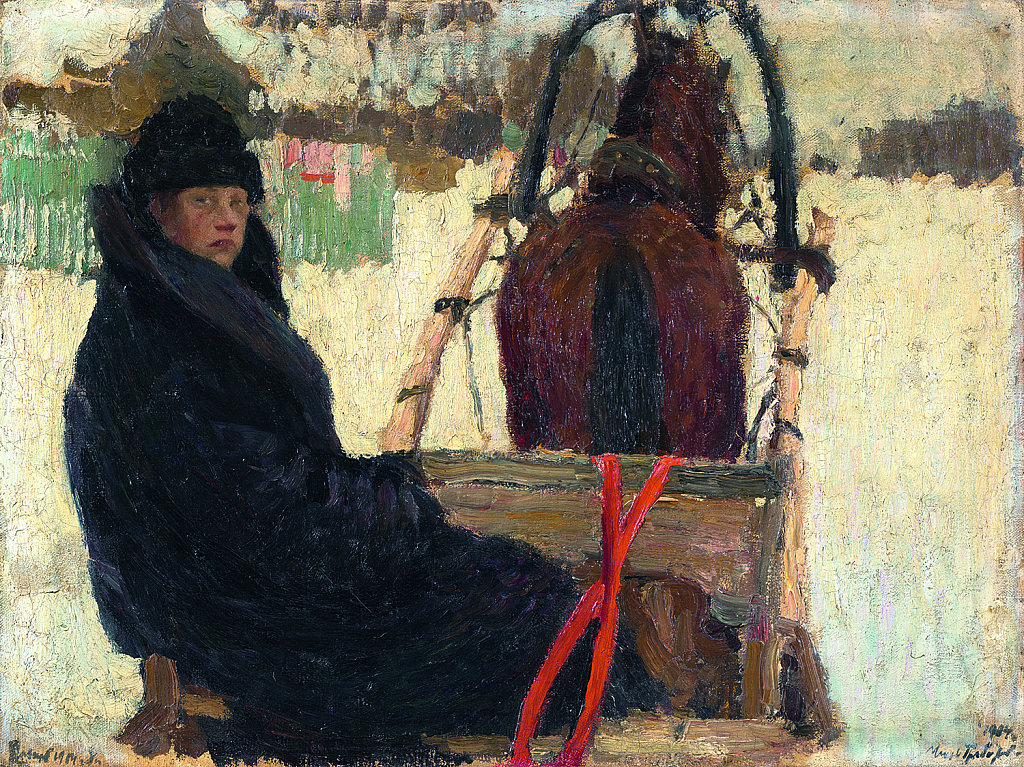
The State Tretyakov Gallery
“One more thing I painted with enthusiasm, on January gray days – my сoachman Mishutka, sitting in a blue robe in a sled, and his dark brown horse, visible from the back, with a simple arc” – said Igor Grabar.
Since the moment Igor Grabar settled in the Mescherins’ estate Dugino, Nikolay Vasilievich wrote out the сoachman Mishutka for him. Inside the family as a joke he was called “watermelon” – his father by the name Arbuzov (watermelon in Russian is arbuz) was an owner of carrier’s trade in Tsaritsyno. Nikolay Mescherin kept a carriage driver Volodya for himself. These carriage drivers had to take artists to sketches in the neighboring villages of Churilkovo, Kolychevo or Shestovo. But Nikolay Vasilyevich got so used to his Volodya that without him he could not do anything. If a sketch was painted at the gate of the house, Volodya had to harness a horse, put an easel, open a box with paints and be present during the sketch painting. As Igor Grabar recalls, finally, Volodya began to make sketches himself, however, they looked plain.
In the painting “Carriage driver” the artist managed to convey Mishutka’s slight dissatisfaction, because for him it was visibly difficult to sit and to pose for hours in the cold. The viewer can also easily guess the approximate age of Mishutka – the artist showed him in a robe which is obviously too big for him. In impressionism that developed on Russian land, especially in its early period, we can often see scenes that continue traditions of realistic painting by Peredvizhniki artists with their dramatically critical social orientation.



